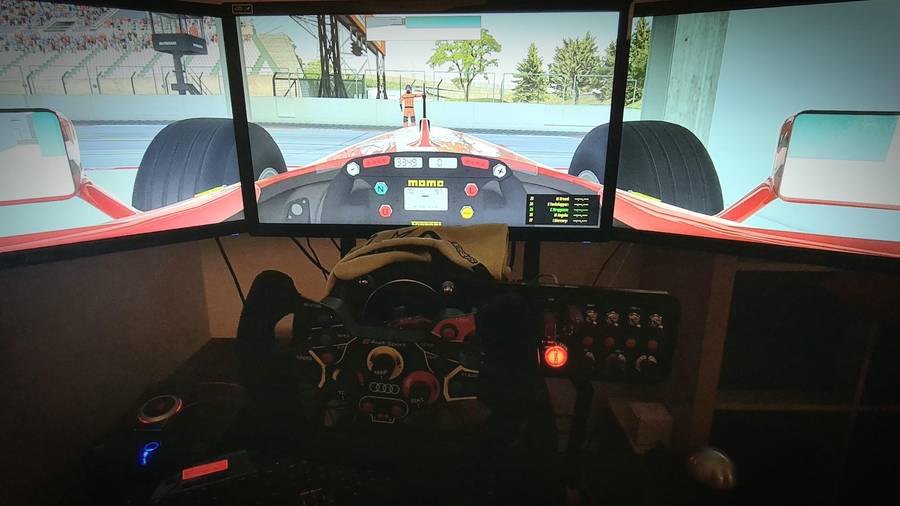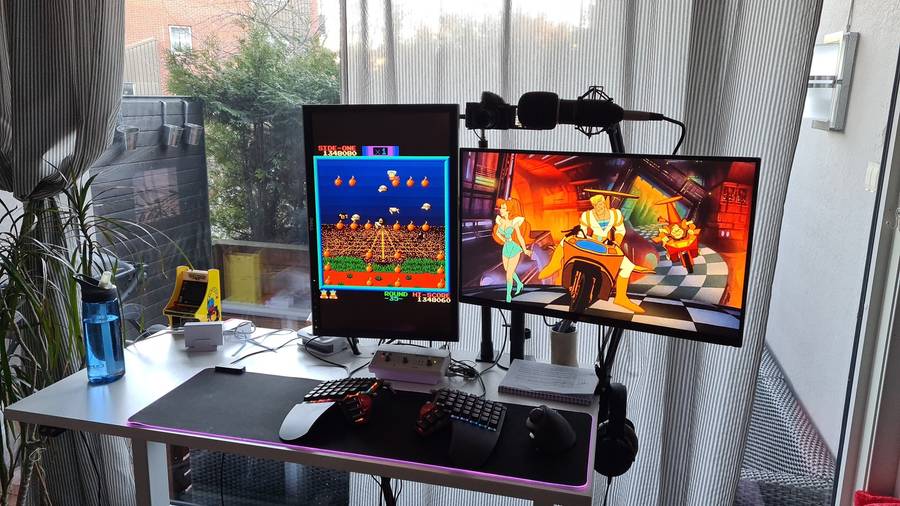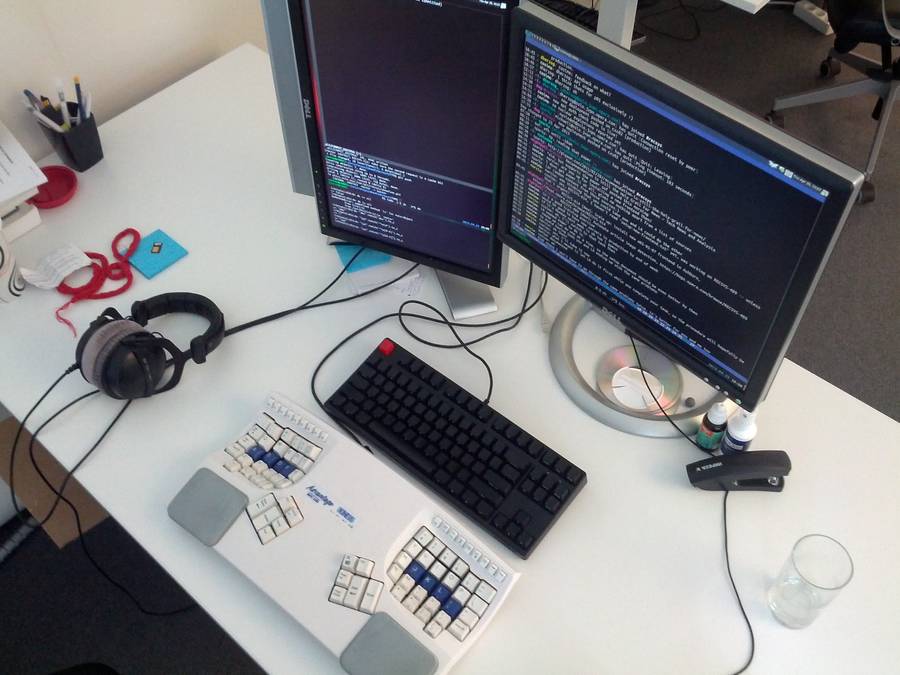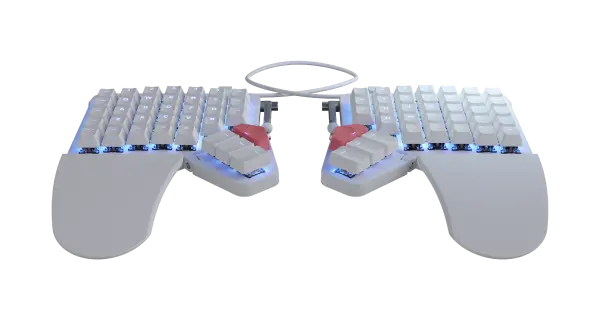The people who use our boards.
385 interviews since 2018
Cosimo
Streppone
Programmer
Who are you, and what do you do? What do you like to do outside of work?
My name is Cosimo. I've been living in Norway with my family for many years, though I am Italian, of the camp that doesn't forgive pineapple on pizza :-) I consider myself one of those lucky people that get to do what they like and get paid for it, which is pretty awesome if you ask me.
I work as a programmer at Kahoot!, a Norwegian ed-tech startup that’s fairly popular, especially in classrooms across the United States. We help teachers, students, and businesses play and learn every day with our software. I find that gratifying and motivating.
I love nature and travelling, discovering and learning about new places. A global pandemic limits our possibilities to travel, but it’s still possible to enjoy nature. Both Italy and Norway are special in those regards.

My children are teenagers now, so I find myself having some more time for personal hobbies. I am a voracious reader. The last books I read are Happiness Is a Choice You Make, Creativity Inc., and a book about deep learning. I love arts, painting, drawing—boring meetings are the perfect time and place to practice!—recording nature sounds, listening to plants, playing music, (astro)photography, cooking, and more. I try all these things, as one should, even though I know my level is of absolute beginner in most.

The hobby I'm spending more energy on is definitely Simracing. I race with my team, SimHQ Motorsports, in a highly competitive championship using a realistic racing simulation/game called rFactor 2. Over time I’ve built a decent setup with triple screens, wheel, pedals and H-shifter.

This video shows a virtual race with a few real-life Formula 1 and Indycar racing drivers.
What hardware do you use?
Since the start of the pandemic, in Norway many companies have recommended that employees work from home, so I've been working from my home for more than a year now.
Shortly after starting to work from home, I bought a small standing desk with height adjustment from a local furniture dealer. I don't have a dedicated studio or office, so I placed the desk in my living room by a really wide window, which makes it a particularly pleasant and calm space to work in.

I am using my office desktop computer at home. I assembled this computer personally a few years ago, to have a powerful but quiet machine. The setup also includes two old Dell monitors, a 24" on the left side in portrait mode and a 27" on the right side, both attached to a dual monitor stand, to have as much free space on the desk as possible.
After a few months of video meetings with random problems with either audio or video ("I can't see you, the camera focus is shifting back and forth" or "The audio is too low," and so on...) I decided to stop wasting mine and my colleagues’ time and upgrade to a better microphone and camera.
I already had an XLR condenser microphone from before, a Marantz MPM-1000 (about $60 or so, less than a "gaming" quality one). I added a cheap microphone boom arm with desk clamping to go with it and placed the microphone over one of the monitors. The microphone is connected to the computer with a small Yamaha Audiogram3 XLR/USB audio interface, which provides phantom power for the microphone. Into the audio interface output I plug a pair of Beyerdynamic DT 770 Pros for music or some lighter in-ear headphones for meetings.

I decided to invest in a good camera as well. Based on a few recommendations and videos, I chose a Sony ZV-1 Camera, which I mounted on a monopod clamped to the desk. The camera is powered by a “fake” battery that can be connected to a power outlet. The camera is connected to the computer through an Elgato Cam Link 4K dongle. The performance of this camera is absolutely stellar. It's pricey compared to a regular webcam, but definitely superior in everything and recommended if you want sharp picture quality and precise focus however much you move around while working.
The hardware setup is completed by a Logitech MX Ergo mouse. I was using a RollerMouse Red in the past, paired with my old Filco Majestouch TKL keyboard, but since switching to a Kinesis keyboard and then to the Moonlander, I had to abandon the RollerMouse, as it doesn't fit split keyboards.
And what software?
I have used Linux as my OS for work for almost two decades now, though I have stopped trying to compile kernels many years ago. Life is too short for that.
Over time I have used several weird window managers. Among them, ratpoison takes the title of most alternative one. My current preference goes to awesomewm. Linux is great for me because there are many choices for every specific component of the OS. Over time I found exactly what I needed, an ensemble of software that adapts perfectly to the way I prefer to work.
The monitor space is organized into nine virtual desktops per screen, always accessible, one at a time, through a single keypress. On the first desktop of each screen (left and right), I place tmux sessions in ROXTerm for all my terminal needs. On the second virtual desktop, a Firefox window. On the left monitor, I always have pinned tabs for Fastmail, Slack, Focus@Will (specific music streams for focused work), Pocket, and so forth. On the right, my pinned tabs are Gmail, Calendar, Atlassian Kanban boards for my most important work projects. I naturally gravitated towards the idea of personal tabs on the left monitor and work tabs on the right monitor. The location of each window and tab, both in the tmux and Firefox screens represents my “mental map.” If I need a calendar, email, or Slack tab, or a specific terminal session, everything is just a keypress or two away. This is similar to the “memory palace” method that many people use to remember a lot of objects or concepts.
The command line is my element. I believe in the ideals of the mighty Vim faction :-), though I learned to appreciate other powerful IDEs such as JetBrains IDEA, PyCharm, and Visual Studio Code—with vim keybindings, of course.
Other useful pieces of software I use on my workstation:
- a slightly customized xscreensaver set up to show my favourite games as screensavers, respecting portrait and landscape modes for the monitors
- Redshift, a small daemon that controls the color temperature of the monitors based on geographic location and time of day
- XBindKeys, to have special combinations of keys trigger specific actions, for example switching keyboard layout, muting sound, and so on...
- Rofi, a quick and effective menu utility to launch programs, switch windows, and other interesting functions, also bound to a specific key
- insync, commercial software to automatically keep Google Drive directories in sync on the local filesystem
- Parcellite, a tiny but life-changing application to manage the system clipboard. If you are not using a clipboard manager, I really recommend you consider doing it. It will save you so much time, it's unbelievable :-)

What’s your keyboard setup like? Do you use a custom layout or custom keycaps?
If you had the patience to read my ramblings up to now, you probably won't be surprised to know that my keyboard setup is heavily tailored to my needs and preferences and it always has been.

Currently I have two keyboards that I use regularly, a Kinesis Freestyle Pro with red Cherry MX switches and custom blank keycaps, and a recently acquired Moonlander in black with red Kailh box switches.
I used the Kinesis for a couple of years, reaching—in my opinion—an excellent level of ergonomics and efficiency. In January I received and started using the Moonlander. I wrote a bit about the experience on Twitter and I'm evolving my custom layout.
This layout is geared towards the tools, editors, IDEs, and window manager I use, which I mentioned above. I'm still experimenting with the tap/hold dual function. Sometimes the hold function triggers too soon, sometimes the lag for the tap is too long... it would seem I need per-key hold delay, but that doesn't sound like something sane :-)
Initially I was quite strongly convinced that I wouldn't be able to adapt to a much lower number of keys compared to the Freestyle Pro. I had some spare money, so I decided to buy the Moonlander anyway and give it a try. I definitely found that to not be a problem because of layers and the potential to use a dual function for each key.

I won't lie, the backlighting was a little addition that makes the Moonlander cooler to look at. I decided to use the colors as a sort of "code": light blue for movement keys, like arrows, page up/down, next screen, etc., orange for modifier keys, red for enter and backspace, etc.
I'm planning to get some more blank keycaps for the Moonlander. I like my keycaps without legends.
What would be your dream setup?
I would say I have my dream setup already. Now if I could bring this setup along with me everywhere I go, that would be a dream :-)






